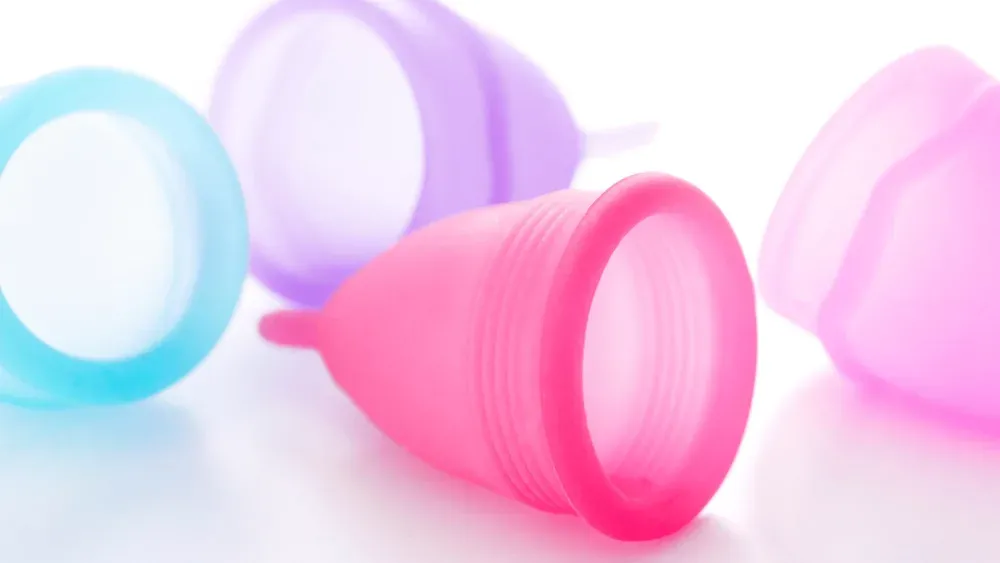What is Menstrual Cup?
A menstrual cup (Period Cup) is a reusable hygiene product for females that inserts into the vagina to trap and collect menstrual blood. It is designed in the shape of a funnel and made of silicone and rubber. Menstrual cups hold more blood than other menstrual methods like sanitary pads and tampons, making them more useful for many women.
Therefore, for some women, using a menstrual cup is the most convenient hygienic product because they are both durable for use during heavy periods and affordable because of their reusable features.

Does Menstrual Cup have any Side effects?
Due to its rescuable features, using it only after cleaning or without sterilising it could have adverse effects including itching or infection. It is very important to sterilise the menstrual cup properly to make it germ-free because the risk of infection rises when using one. Lack of attention could result in a vaginal infection.
Also Read: What is Vaginal Yeast Infection? How to Treatment it at Home?
Benefits of Using a Menstrual Cup
No hassle of frequent change- If you use a pad, you have to change it frequently throughout the day, especially if you have a heavy period. When you use a menstrual cup, this does not occur at all; once you applied, it will last for a whole day without needing to be replaced.
Free from bad odour- You commonly experience problems like a foul odour when using sanitary napkins. You won’t have any issues like unpleasant odours with the menstruation cup.
Environment friendly- Due to reusable they are environmentally friendly, they can last a very long time and won’t contribute to waste disposal. Unlike the monthly expense of tampons or pads, the cost of a menstrual cup is a one-time expense because it is reusable.
No fear of leakage– Some soft disposable cups can be used during sexual intercourse. You won’t have to worry about leaks.
Swimming is also no longer a source of fear due to the usage of a menstrual cup; if you use anything else, your stress will still be present.
No risk of allergic or infection- Sanitary napkins and tampons include chemicals like dioxin and bleach while menstrual cups are made without the use of chemicals, these are chemical-free, which greatly reduces the risk of vaginal infection or skin allergy. Menstrual cups do not absorb blood, as opposed to tampons and sanitary pads, thus there is very less chance of bacterial infection.
Disadvantages of Menstrual Cup
Beginners may find it challenging to insert- If you’re using it for the first time, it can be challenging. If you are having any trouble with insertion, you must consult your physician.
Learn to use a menstrual cup- You need to learn to use a menstrual cup even when you aren’t having a period. Remove the menstrual cup, then insert it into the vagina until you are at ease.
Difficult to find the right fit- Menstrual cups are available in different sizes-small, medium and large. Depending on your age, flow, and preference, finding the ideal fit might still be difficult, especially if you have a tilted uterus or a low cervix. It probably still bothers you even if you don’t use it properly because it makes them difficult to wear.
Removal can be embarrassing or messy- If you have no trouble inserting the cup, taking it out can be challenging, sometime it could be messy during removal. Additionally, washing the cup and wiping it out with toilet paper in the restroom sink while you’re in public may be embarrassing.
Who should not use menstrual cups?
- Do not use the menstrual cup if you have intense burning or itching in the vagina after doing so.
- It is suggested that women who have silicone or rubber allergies refrain from using menstrual cups.
- In addition, if you can’t locate the ideal size for menstruation cups, avoid using them because if you choose the incorrect size, you might not receive the desired outcome or feel comfortable.
Remember, it is essential to wash your hands with a mild hand wash before inserting or removing the menstrual cup to prevent infection.
